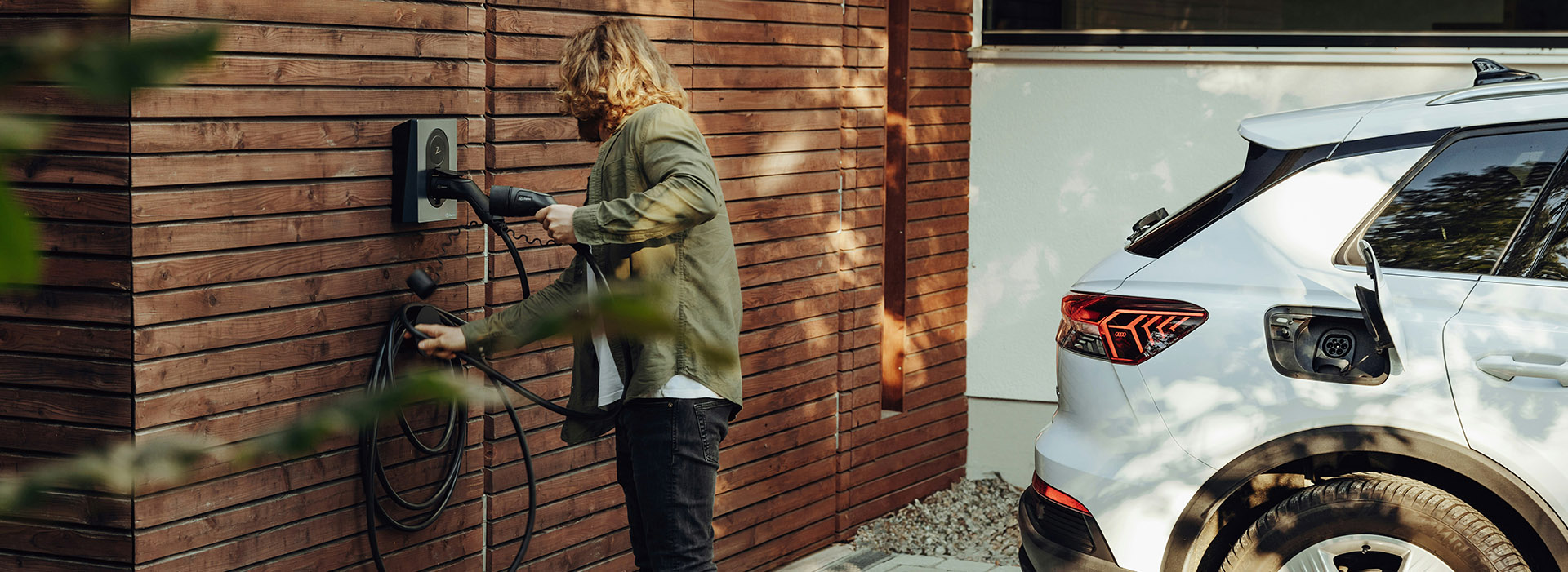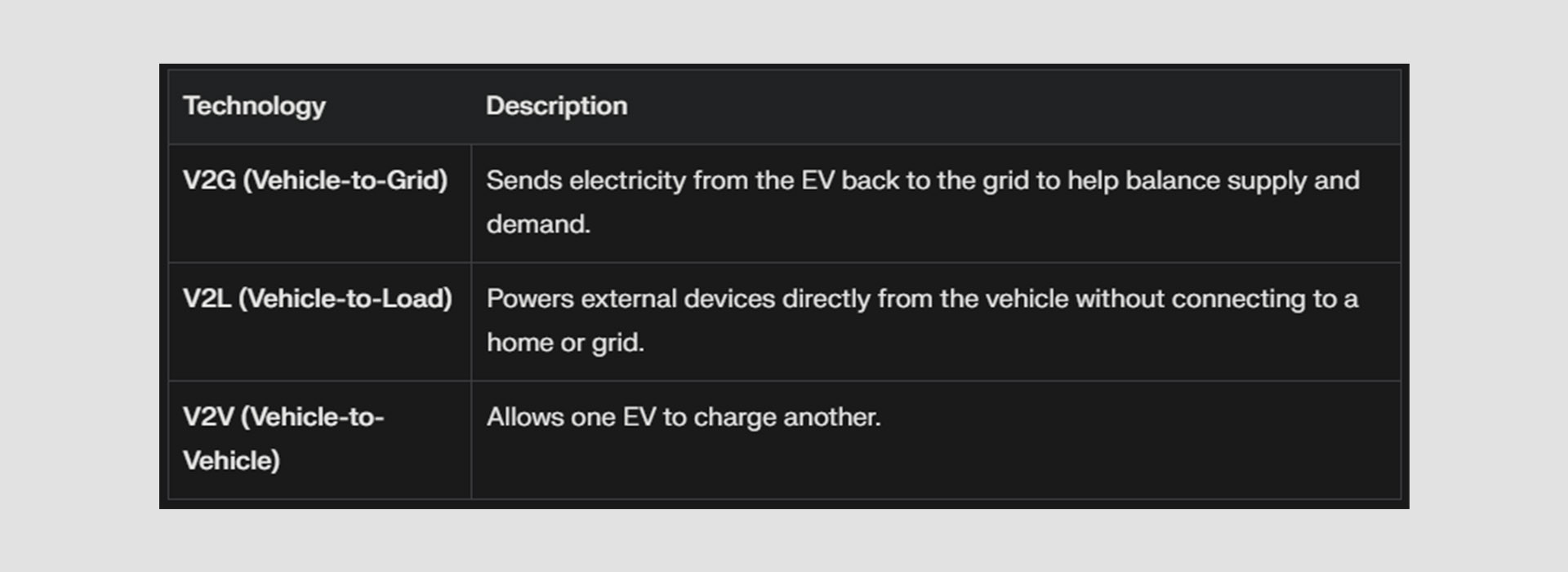What is V2H (Vehicle-to-Home)
Vehicle-to-Home (V2H) is an innovative technology that allows electric vehicles (EVs) to supply electricity to a home. Through bidirectional charging, energy stored in the EV’s battery can be used to power household appliances, lighting, and other electrical systems. This capability transforms the EV into a mobile energy storage unit, providing backup power during outages or reducing energy costs by using stored electricity when grid prices are high.
▶ How Does V2H Work?
V2H operates using a bidirectional charger, which enables the flow of electricity both ways—charging the EV from the grid or discharging energy from the vehicle’s battery back into the home. Here’s a simplified breakdown of how it works:
- Charging: The EV battery is charged using electricity from the grid or renewable sources like solar panels.
- Discharging: When needed, such as during a power outage or peak electricity pricing periods, the stored energy in the EV is transferred to the home via the bidirectional charger.
- Energy Conversion: Since EV batteries store energy as direct current (DC), and homes use alternating current (AC), the charger must convert DC to AC for household use.
▶ Key Benefits of V2H
V2H offers several advantages for homeowners and businesses:
- Backup Power: During power outages, V2H can keep essential appliances running, such as refrigerators, lights, and medical devices.
- Energy Cost Savings: Homeowners can charge their EVs when electricity rates are low (e.g., at night) and use that stored energy during peak hours when rates are higher.
- Environmental Impact: When paired with renewable energy sources like solar panels, V2H can reduce reliance on fossil fuels and lower carbon footprints.
- Grid Support: While V2H generally powers only the home, it indirectly reduces strain on the grid by lowering peak demand.
▶ V2H vs. Other Bidirectional Charging Technologies
V2H is part of a broader category of technologies known as Vehicle-to-Everything (V2X), which includes:
The key difference between V2H and V2G is that V2H supplies power only to a home, while V2G interacts with the broader electrical grid.
▶ Challenges and Future Outlook
Despite its potential, V2H faces several challenges:
- Limited Availability: Currently, only a few EV models support bidirectional charging. However, manufacturers like Nissan, Ford, and Mitsubishi are expanding these capabilities.
- Cost of Equipment: Installing a bidirectional charger and necessary electrical components can be expensive. As adoption grows, these costs are expected to decrease.
- Battery Degradation: Frequent charging and discharging cycles may accelerate battery wear over time. However, studies suggest this impact may be minimal with proper management.
As more EVs enter the market and renewable energy adoption increases, V2H is expected to play a significant role in enhancing energy resilience for homes while contributing to a more sustainable future.


